Math this week centered on preparations for our mini-golf course and games. Red math finalized their scale drawings of two different putt-putt holes. Each pair was responsible for choosing one design that we will build next week. Students had to use what they have learned about proportional relationships and scale to create a table of materials we will need. Each pair found the unit cost of each material, the amount needed for their design and the total cost of each material. Students worked carefully knowing that only the materials in the amounts they specify will be available to them at construction time!
Blue Math worked out similar plans for their "choose your own adventure" style mini-golf. The rules of this game link many important concepts we have learned this year. The starting tee could be anywhere on the hole, which is based on a large coordinate plane. To determine your starting point, you draw an x coordinate card and a y coordinate card. On each card is a variable equation. You solve the variable equations and determine the coordinate point "tee". It is then up to you to make the best shots to get to the hole (in this case, the origin of the coordinate plane).
We conducted year-end benchmark testing through AIMSWeb. We also delved into mini-projects in math that highlight concepts we have been learning….
Red Math
Students created detailed scale drawings of mini golf holes and then chose one design on which to base a scale model. The drawings and model-building require a clear understanding of using simple proportions to determine segment lengths. We have also been using the drawings and models to practice finding the perimeter and area of various shapes.
Blue Math
We wrapped up our exploration of the Alice software this week. Several students chose to create a short video that brings a particular math concept to life. For example, Sammy built a short animation that demonstrates probability. Blue Math students created a unique game that brings together variable expressions and the coordinate plane system. The main idea is to create a type of mini-golf hole in with the "tee" or starting point is represented by a point on the coordinate plane. Players will draw cards that require them to solve equations to determine the x and y coordinates of their unique "tee". We will be designing the gameboard and detailed rules next week.
RED MATH
We reviewing measuring and classifying angles in preparation for a fun math project: mini-golf course design! We played a fun game called protractor mini-golf. To play a “hole”, you take a look at the hole diagramed on a piece of paper, estimate the angle and distance you will need to make a hole in one, record your estimate, and then measure out that angle and distance to see how close you get. Most of our golf holes were "par 3"…we even had a chance to design our own holes for protractor golf and play!
BLUE MATH
We reinforced our understanding of proportions and place value with a fun mini-project: Money Madness! Students explored a hypothetical scenario of how they would spend (and be taxed on) a large lump sum of money. It also reinforces the real-world application of proportions, percentages. We will finish up this mini project next week with Part 2- exploring interest and how variable equations can represent the growth of money in savings over time.
We also got comfortable with the Alice computer programming software. I am looking forward to using this this student-friendly program to build a better understanding of variable equations and inequalities, coordinate planes, and mathematical proofs. We wrapped up our study of basic variable expressions and began exploring variable inequalities.
Blue Math
We initiated a new mini-project using the Alice computer programming software and associated tutorials. This program, developed by Carnegie Mellon University and Duke University, offers an engaging way for students to apply their understanding of variable expressions, coordinate planes and complex order of operations. We also continued to practice solving and factoring variable expressions.
Red Math
We reviewed a few important math concepts from earlier in the year, linking our knowledge of algorithms and concepts to more complex story problems. We used multiplication "cluster" problems to link place value and number relationships to long division and multiplication. We also began planning our Mini-Golf Project, which will offer a fun way to learn geometry, understand scales and rates, and apply our measurement skills.
Blue Math
We are wrapping up Chapter 4 of the Core Connections curriculum.We expanded our familiarity with variable expressions by beginning to look at ways to factor complex expressions. We also looked at relationships that include more than one variable and how to represent one variable in terms of another. We also built fluency with variable expressions by translating simple word problems to variable expressions and equations.
Red Math
Students continue to build number sense while practicing valuable algorithms by looking at multiple ways to solve division and subtraction problems.
We wrapped up our week in math by reflecting on which work from this year would best show off our learning in our portfolios. Students are thinking about important concepts and how they have developed new math skills since September. We also prepared ourselves for our upcoming ERB testing by playing a fun round of Math Jeopardy. This was a great way to get comfortable with multiple choice questions on a variety of math topics.
Blue Math has come up with some amazing "mathmagic problems". Through magic tricks, we have come up with amazing ways to manipulate numbers and unlock the power of variables. We also continue to explore variable expressions, using mathematical properties to simplify complex expressions. As we prepare to finish up chapter 4 of our text, we are reviewing important whole number characteristics, combining positive and negative like terms to simplify variable expressions. Blue Math is also wrapping up the design of their dream house/restaurant plans. The mini-project ties in bugeting, scale factors, proportions and geometry in a really exciting way!
Red Math
We are working to deepen our understanding of number patterns, factors and the base 10 system through fun math puzzles. As we discuss our thinking behind each puzzle, we have learned that we have different methods of reasoning through these math challenges. These investigations focus on gaining fluency with number patterns so that problems such as "72 x 102" are really not so complicated after all! We also practiced our number knowledge through "The Digit Game". Players choose a target number, such as 1000. They then draw 4 digits cards and use some combination of those cards to build the number closest to 1000. We assess how close we got by looking for the difference between the two numbers. These investigations are a great way to build number sense and develop computation strategies.
Red Math
We wrapped up our study of probability this week! We had a lot of fun exploring fair and unfair games. The students are comfortable thinking about chance mathematically, using fractions and percentages to represent the probability of an event happening.
Blue Math
Blue math continued to work on their dream houses and dream restaurants. Their blueprint designs are almost complete. We are now working on clearly laying out a budget for construction and design. We also continue to explore variable expressions, practicing our skills at simplifying expressions and using order of operations and the distributive property.
Red Math
Red Math is exploring the world of probability! We are almost finished with our unit, and everyone is understanding this elusive concept well. We have been playing a lot of games using spinners to play around with probability. We use spinners to replicate random chance and have used our background with fractions and percentages to easily understand the chance of, for example, landing on a 1/4 wedge of the circle. We have expanded our investigation to try to maximize our odds of scoring points in more complicated spinner games. We also used a simple investigation of exploring the probability of a juice bottle landing up or down when flipped to make more complex connections to data analysis. We discovered that a group of authentic data points tend to make a bell shaped curve when plotted. In our most recent investigation, we explored fair vs. unfair games through a manipulated game of rock-paper-scissors.
Blue Math
Blue Math methodically worked through the details of finding the area of the floors and walls of their dreamhouses. Once everyone had double-checked their calculations, it was time to price out the cost of the flooring and window covering of our dreams! One group used solid web research to find the true cost of covering their floor in gold leaf! Another group is covering the floors of their dream restaurant in clear glass. Cool! It has required careful work in using conversion factors and scale, but everyone is one their way to detaling the plan of their dreams! The 6th graders also continue to build their understanding of the concept of variables standing in for unknown values, so important to the subject of algebra. We are creating and simplifying various expressions that include variables in addition to numerals.
Red Math
Red Math delved into a new unit: Probability! We explored the language of probability and the fractions and percentages we would associate with terms like "likely", "unlikely", "certain", and "impossible". We also compared our predictions to real data for events such as flipping coins, using spinners, and rolling dice.
Blue Math
Blue Math continues to work on their dream houses. One pair has transitioned to a “dream restaurant” after our inspiring projects last week. We are also exploring the use of variables in expressions. We are learning ways to use variables to represent unknown values in an expression to represent the area of perimeter of certain shapes. We also worked on showing our work in clear ways so that I can always see students’ thinking.
Leah Ritz, a graduate student from TSS, designed project-related math lessons for us this week. Instead of splitting into red and blue math, we worked in pairs and individually to use our math skills in ways that link directly to cooking and running a business. Early in the week, we explored equivalent measures and increasing and decreasing recipes proportionately. We priced out menu items, using our knowledge of proportions and percentages to make things profitable. We also used our knowledge of proportions to work with scale in designing a simple floorplan for the restaurant of our dreams!
This Week in Blue Math
Students are working on the next unit in the CPM curriculum. As we explore proportional relationships, constant rates, and scales, we are using our skills to design an amazing house. Students are working with a partner to sketch and then draw to scale their “Dream House”. We are practicing by taking measurements of existing rooms and drawing them to scale on graph paper.
This Week in Red Math
Students are getting more comfortable working with fractions. We are comparing various fractions as well as adding fractions together. We are particularly focused on finding common denominators in order to add two different fractions together. This goes hand in hand with further practice at reducing fractions. We have already put our skills into practice by adapting one of our project recipes into the right proportions for our class size.
This week in Red Math
Investigations: Name that Portion;
Fractions to decimals.
![]() correlations for this week and next week:
correlations for this week and next week:
|
Decimals |
Fractions and mixed numbers |
Add and subtract fractions
|
This week in Blue Math
Last week students learned that they could identify proportional relationships by looking for a constant multiplier. This week we revisited the problem in a previous unit that contained a proportional relationship. In our first unit, students found a multiplicative (or proportional) relationship between the height of a stack of pennies and the number of pennies in the stack. Students learned that they could always find one piece of information by multiplying the other by a constant number. Then, comparing the data from the penny problem to a new problem, students explored what it meant when data was not proportional.
This week students were also given time to create their ‘dream houses’. While students had fun sketching the blueprints for their houses, they were challenged to investigate realistic measurements for the sizes of their rooms by taking measurements at their own houses for their five minute math. This mini-project will take place in conjunction with our regular math throughout the rest of the month.
![]() correlations for this week and next week:
correlations for this week and next week:
|
Data and graphs
|
Measurement1. Y.1Estimate customary measurements 2. Y.2Estimate metric measurements 3. Y.3Convert and compare customary units 4. Y.4Convert, compare, add, and subtract mixed customary units |
Ratios, proportions, and percents |
This week in Red Math
Investigations: Name that Portion; Investigation 1 - Session 7, Investigation 2 Sessions 3-7
This week students continued to work with fractions and how to add them through a variety of different methods.
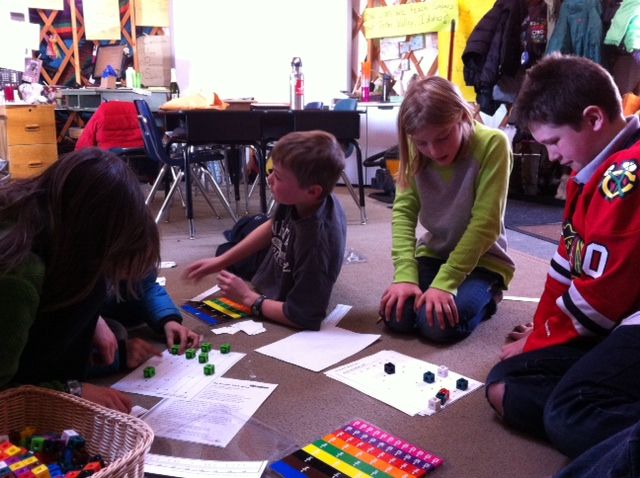
Over the holiday break, if students want to spend some time on IXL, please direct them to the following sections:
 correlations for this week and next week:
correlations for this week and next week:
Fractions and mixed numbers |
|
Add and subtract fractions |
This week in Blue Math
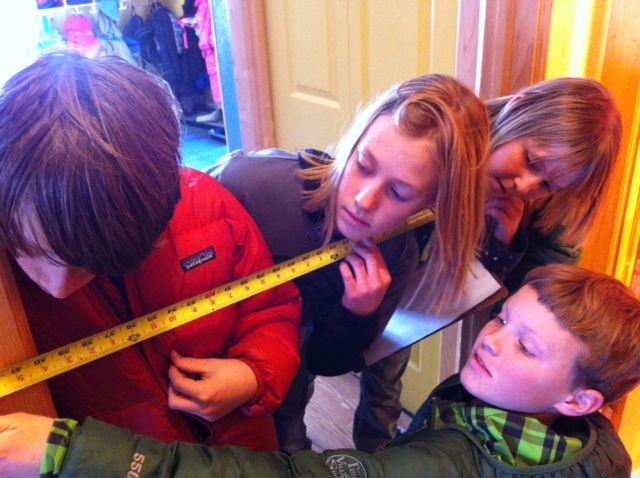
·  correlations for this week and next week:
correlations for this week and next week:
This week in Red Math
Investigations: Name that Portion; Investigation 1 - Session 7, Investigation 2 Sessions 1 and 2
This week students found fractions that represented the rotation of one hand around a clock face. They also used their understanding of fractions and percents thus far to solve word problems.
Next week, we will work with different ways to express fractions, continuing to work with clocks, or circles, and then making a variety of fraction strips - practice diving rectangles into different sized parts.
 correlations for this week and next week:
correlations for this week and next week:
Fractions and mixed numbers |
|
Add and subtract fractions |
This week in Blue Math
·  correlations for this week and next week:
correlations for this week and next week:
This week in Red Math
Investigations: Name that Portion; Investigation 1 - Sessions 1-6
This week we continued to discuss common uses of fractions, decimals and percents and come up with as many equivalent numbers for these types of values as possible. Students were introduced to fraction equivalent strips and played a game using them in which they developed their sense of the relative size of fractions as they laid out fraction cards in order.
Next week, we will begin to complete more fraction and percent problems and move on to Investigation 2: Models for Fractions
 correlations for this week and next week:
correlations for this week and next week:
Fractions and mixed numbers |
|
GeometryReview |
This week in Blue Math
Students spent most of the week reviewing our last unit so they could finish their unit test and correct it. Students seemed to be stumped on how, when they work on positive and negative numbers during class, they think of the problems as easy. When it comes to completing them on the test, however, students seem to slip into the land of forgetfulness - Therefore, even though we are moving on to a new unit next week, we all agreed that we will not stop working with positive and negative numbers until every blue person consistently gets these types of tricky problems correct in their math journals.
·  correlations for this week and next week:
correlations for this week and next week:
Integers
Add and subtract integers |
|
Ratios, proportions, and percents |
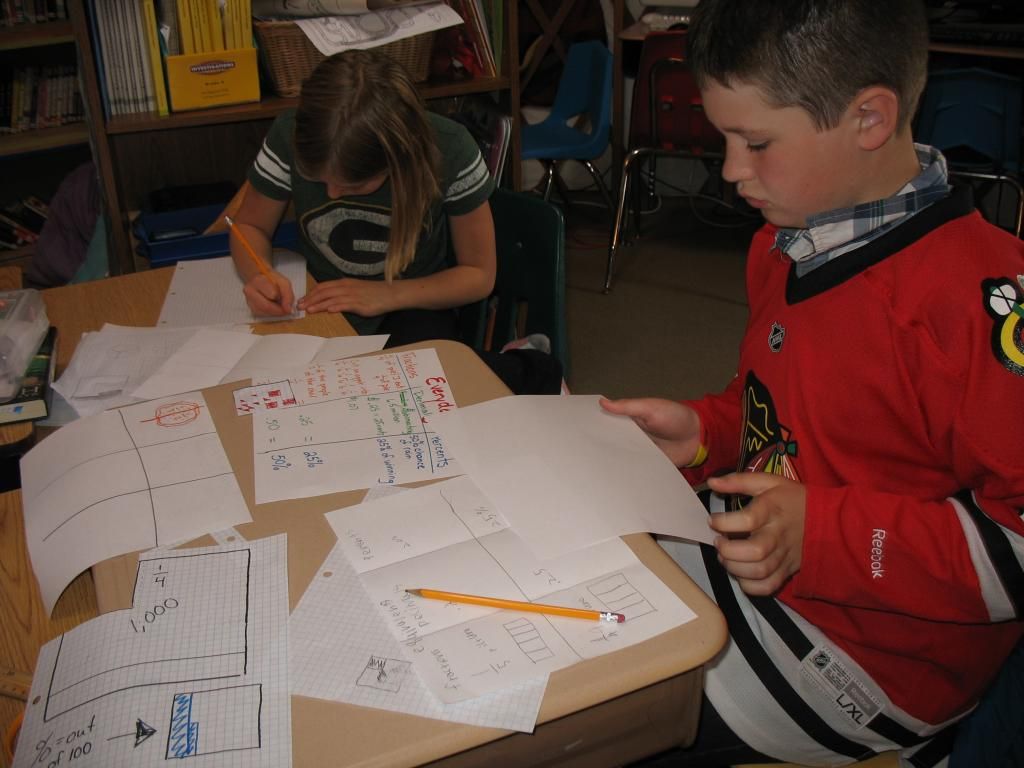
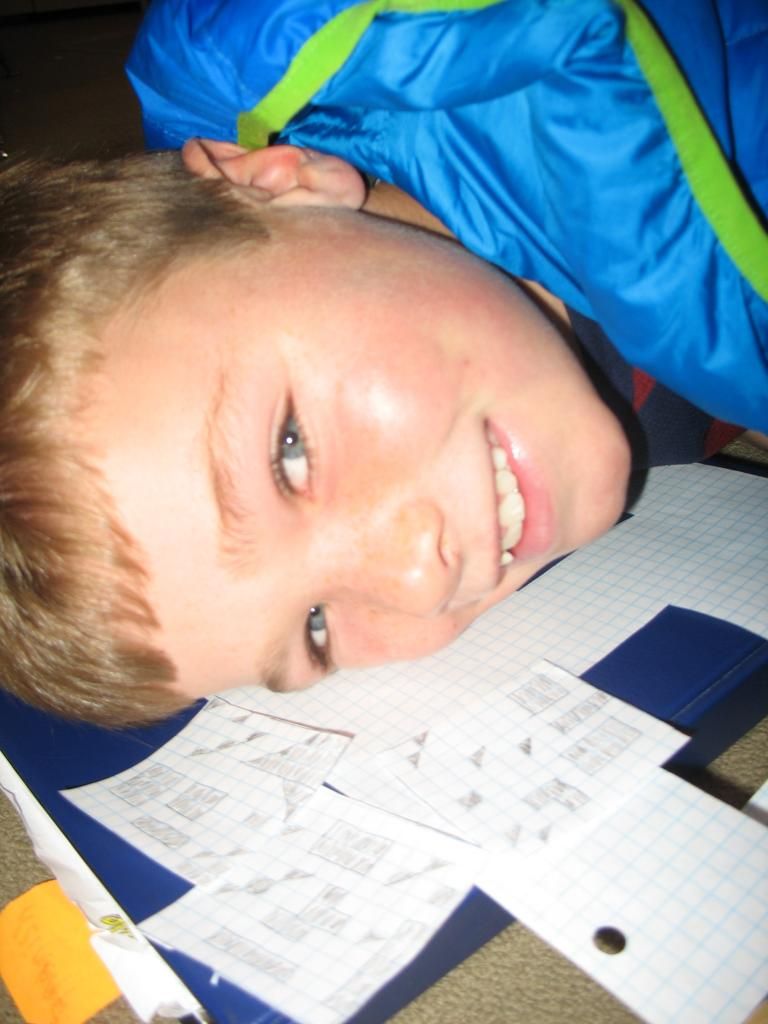
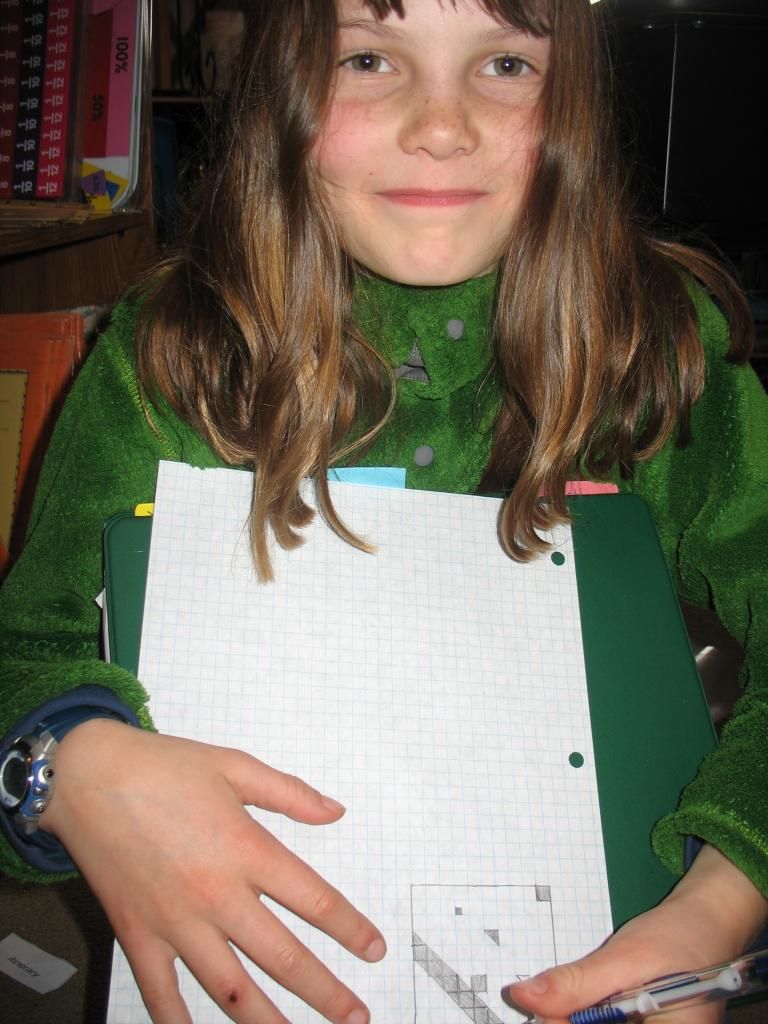
This week the Red Math group were asked where they saw fractions, decimals, and percents in their every day lives. They it turns out that these three different ways of representing numbers are used everywhere. Pizza was the most common way the students thought of how many slices of pizza they ate out of how many total slices were in a pizza. They associated decimals with money and percents with weather and the chance it would snow. We then began to explore how fractions, decimals, and percents could be different ways of representing the same portion of something. We also began to talk about equivalent fractions before we ran out of time!
Over Thanksgiving break, it would be great for students to practice with the basic concepts we covered this week on IXL. Here are the topics to look for under the 5th grade math tab:

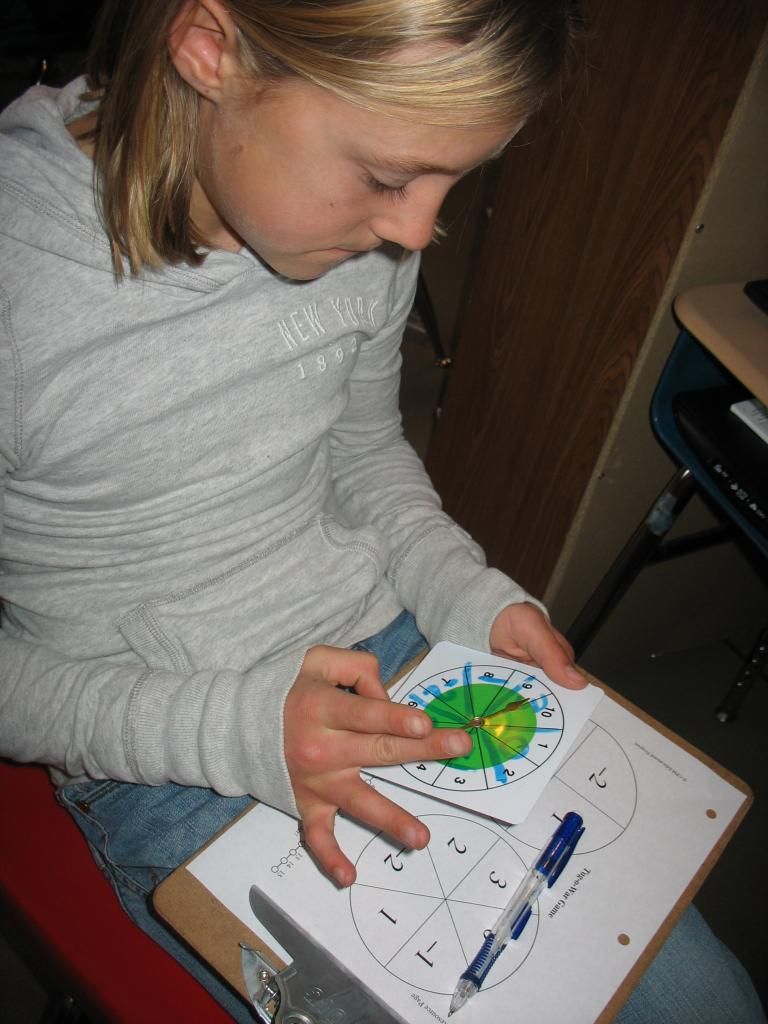
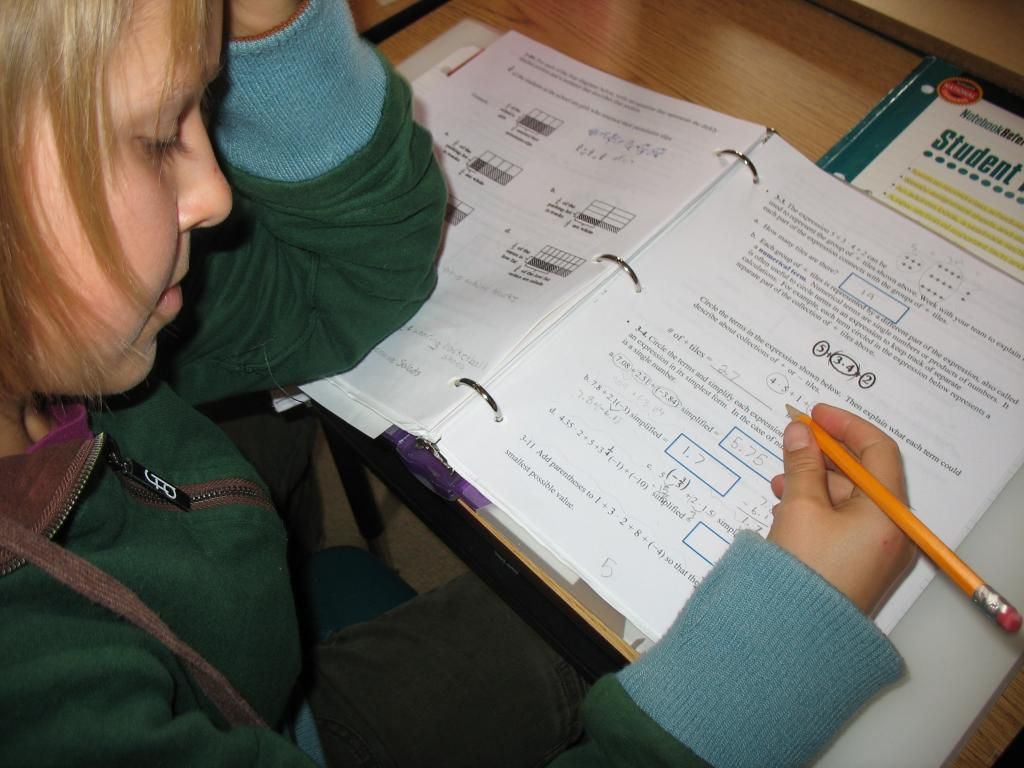
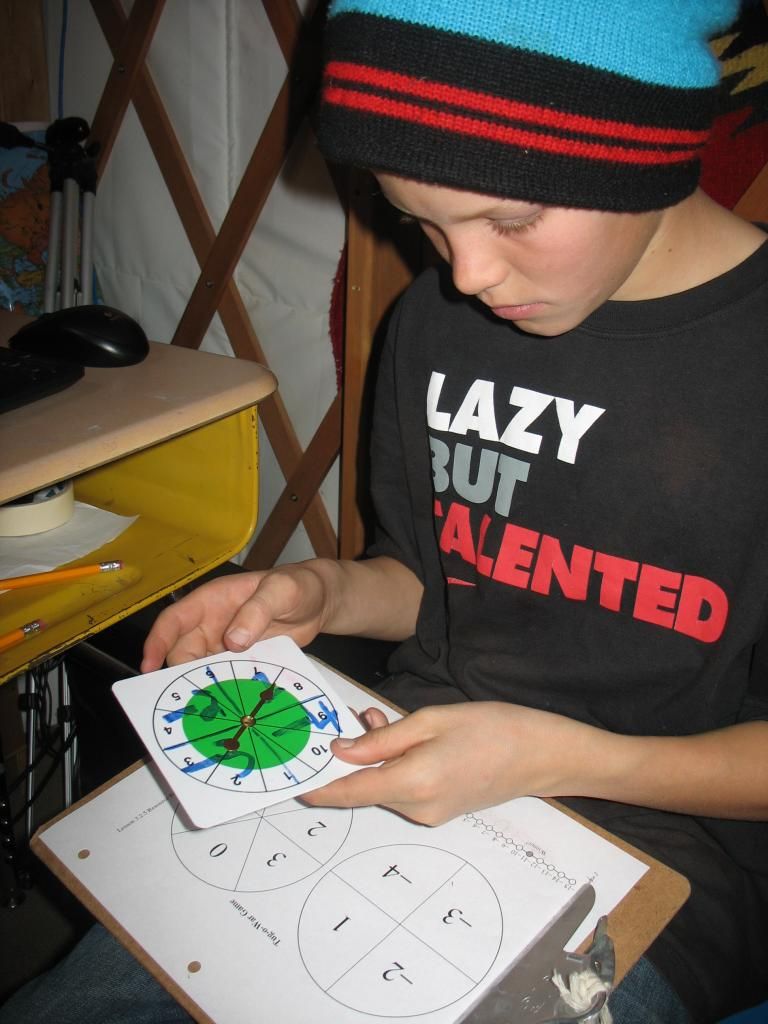
Wreath Sales!
We spent Friday's math class calculating how much profit we made from our wreath sale fundraiser. This was a great opportunity for students to practice with very real world math. They had to calculate the difference between the total amount of wreaths sold versus the total profit. They figured out which class sold the most wreaths. To wrap up, some students calculated the percentages of types of wreaths sold out of the total and made a ratio out of the different class values per student.
Here is what they came up with.
In all, we sold $13,011.00. The Toros sold $5,346 of that and the Tiger Wolves sold $5,905 with the extra being bought by other TVCS community members.
The total profit from those sales is $4,636.65.
That means that each class gets $2,318 for project use.
Los Toros are proud to announce that we have decided to donate a portion of our wreath earnings to help victims of the Typhoon in the Philippines. We are going to donate $300.00 to theDirect Assistance: Haiyan Relief Effort. This organization was started at the spur of the moment by several of Jeremy's close friends from his recent graduate program. They are delivering supplies to places that no other humanitarian aid or military group has been able to help yet. Check out their facebook page below if you would like to donate something.
https://www.facebook.com/groups/649210758434947/

Red Math
The red group spent time practicing with angles and reviewing the properties of triangles and quadrilaterals on Monday in preperation for the unit test on Tuesday.
The next unit we will tackle is the Investigations unit - Name that Portion
As opposed to the previous unit, this one tends to take much longer as students seem to always struggle with the concepts of fractions, decimals, and percents. In this unit, we will come to see fractions, decimals, and percents as different ways to represent the same number. Students will develop strategies for finding equilvalent notations so that they are able to move back and forth freely among notations and to choose the one most appropriate for a specific situation.
 Correlations
Correlations
Review:Geometry |
|
New:Decimals
|
Blue Math
This week I decided to combine and condense the 2nd and 3rd units of the CPM curriculm since students are wizbanging through them. The concepts in the units that students are seeming to get stuck on, and the concepts that we slowed down to work on more thoroughly, seem to be using the order of operations in long number sentences with positive and negative numbers. Learning how to utilize the order of operations, simplify expressions, and group common variables is a very important skill for pre-algebra.
This meant that as a class on Tuesday, I worked entirely with the Blue Group as the Red Group took their test so we could get some quality time with the types of problems students are experiencing in math. We stepped away from the curriculum to clean up the way students solved, and show how they solve, longer problems. We will see if this method of work lasts throughout the week, and more importantly after Thanksgiving, however.
 Correlations
Correlations
Red Math
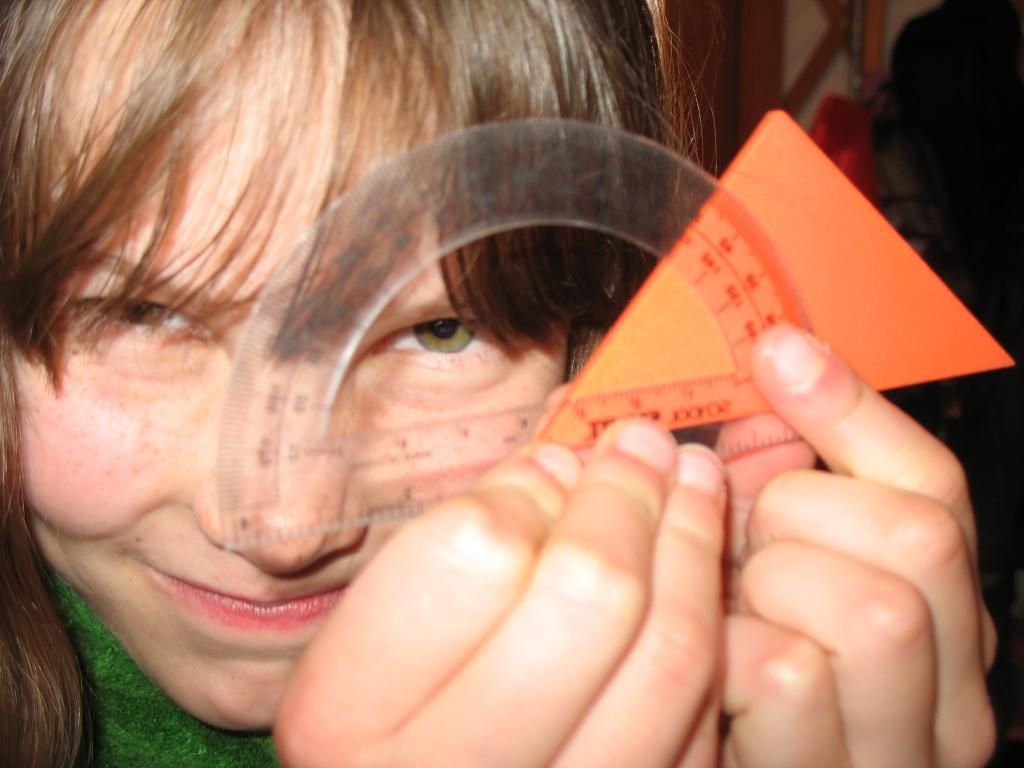 This week we started off with more protractor practice. We then identified the characteristics of all quadrilaterals and triangles. Students played two games to work on these skills: Angle Tangle and Name That Shape. They are great games and can easily be played at home - a fun way to catch up on the math your child is doing in school!
This week we started off with more protractor practice. We then identified the characteristics of all quadrilaterals and triangles. Students played two games to work on these skills: Angle Tangle and Name That Shape. They are great games and can easily be played at home - a fun way to catch up on the math your child is doing in school!
 Correlations
Correlations
Blue Math
This week the blue group corrected the problems they got wrong on their test. Everyone was then ready to move on to our next unit. Not surprisingly with this talented bunch of kids, the new unit is already flying by. So far, it has been a review of integers. The kids are psyched that it is so easy but will they still think so when adding/subtracting/multiplying/dividing positive and negative numbers gets an algebraic twist? We'll see as we power through the second unit of the CPM curriculum.
Students worked with positive and negative numbers like they were on a tightrope... :) 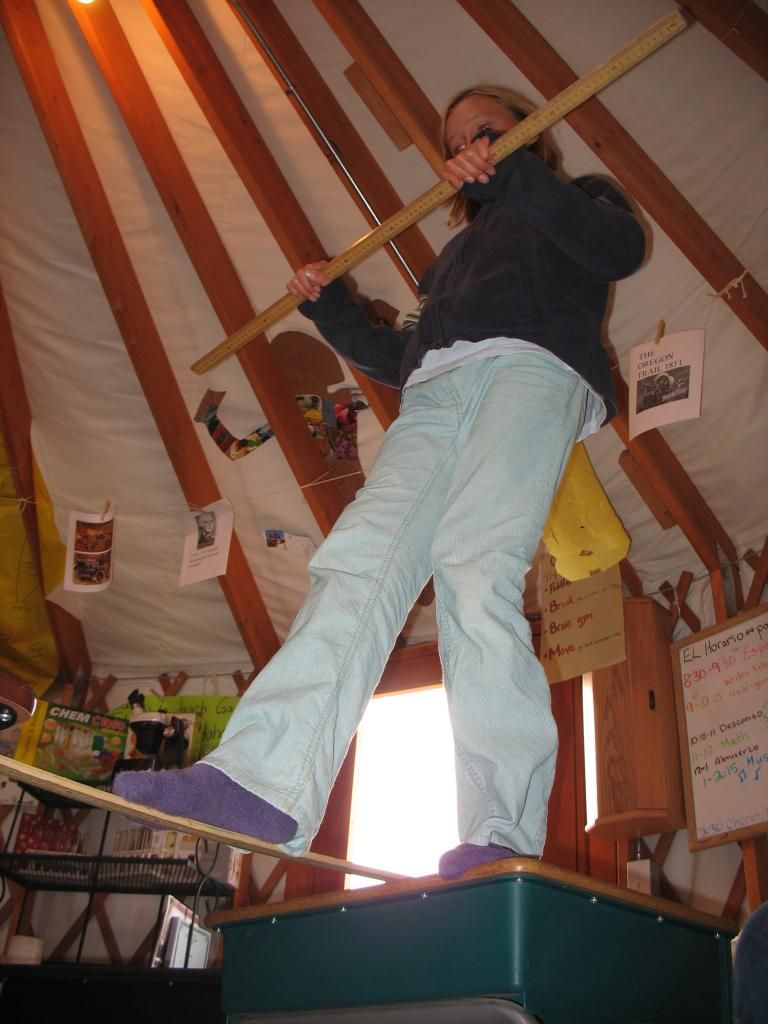
 Correlations
Correlations
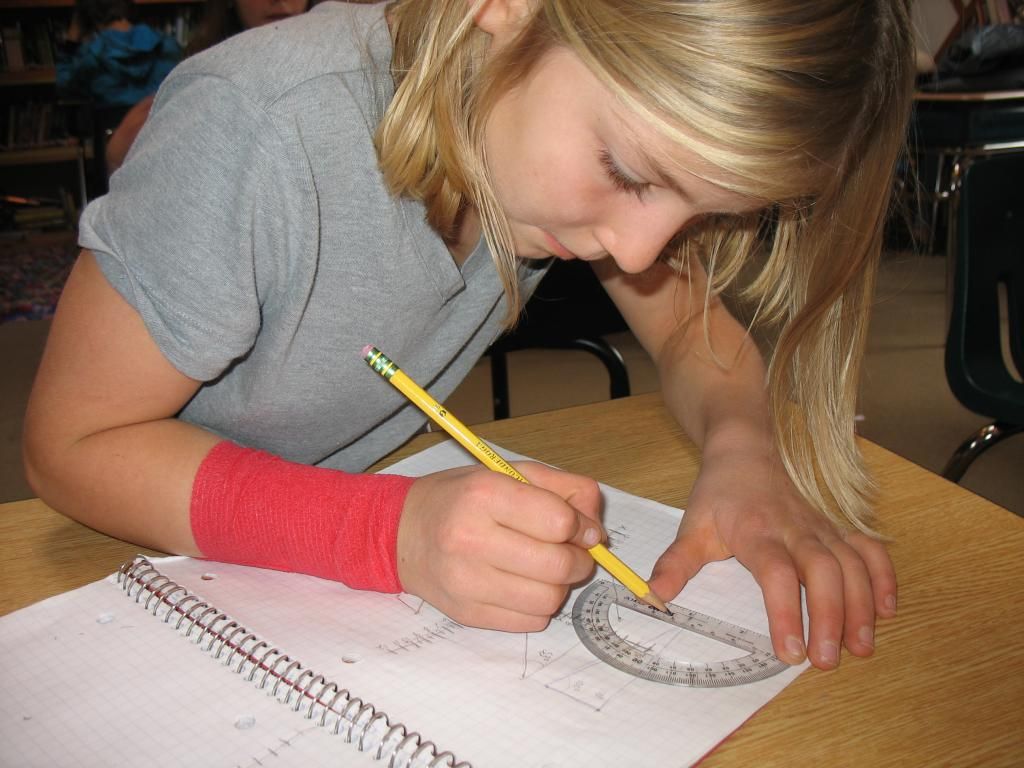
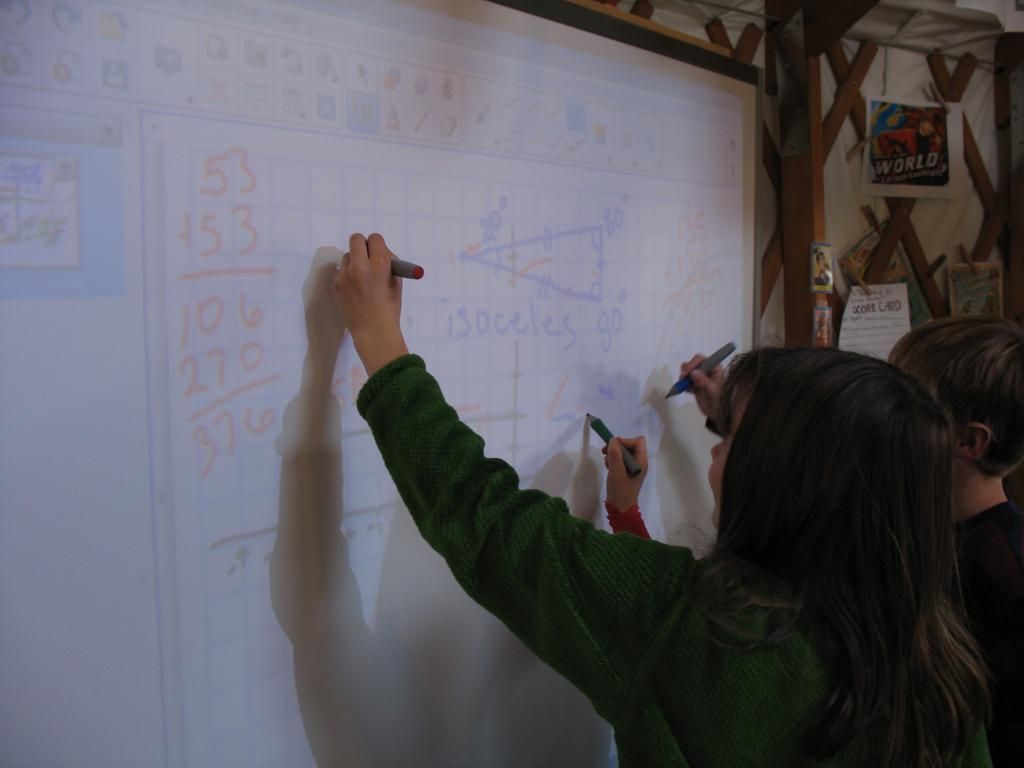
RED MATH
This week students in the Red Math group were steeped in geometry. They learned the difference between right, obtuse, and acute angles. They were perplexed over the difference between a line, line segment, and ray. And stumbled around learning how to use a protractor to measure angles.
"Using this thing is hard! It looks so simple!" Matthew exclaimed while using a protractor.
Alas, it is true which is why we worked with the protractor all week long.
IXL correlations for this week and next week:
Geometry |
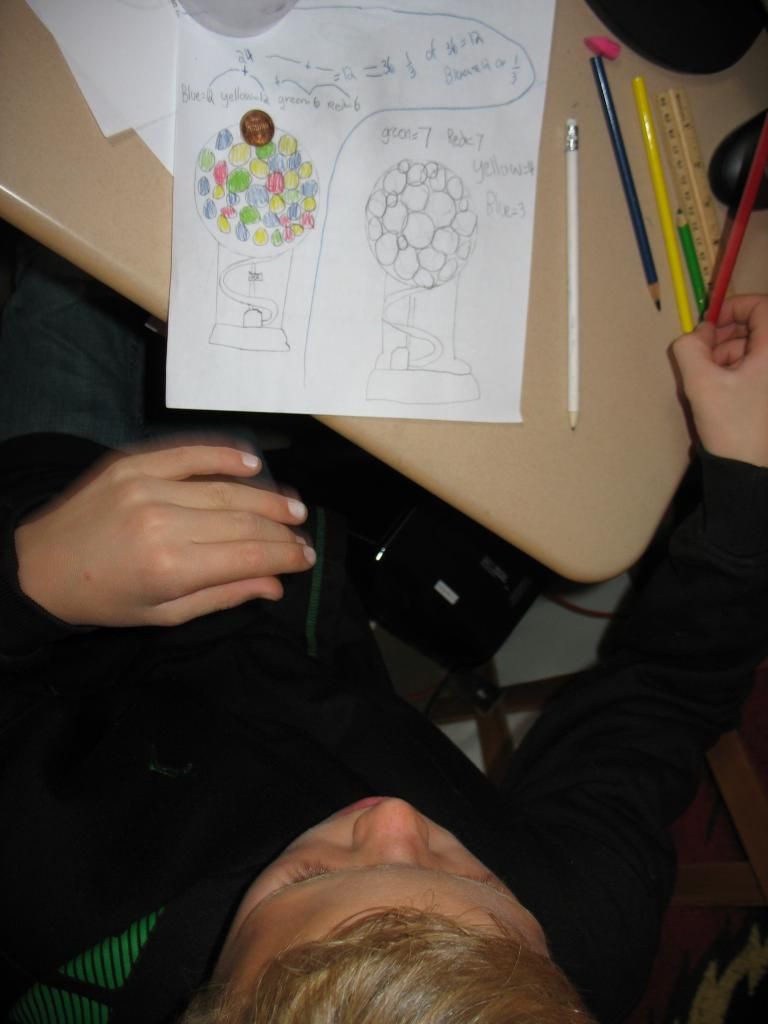
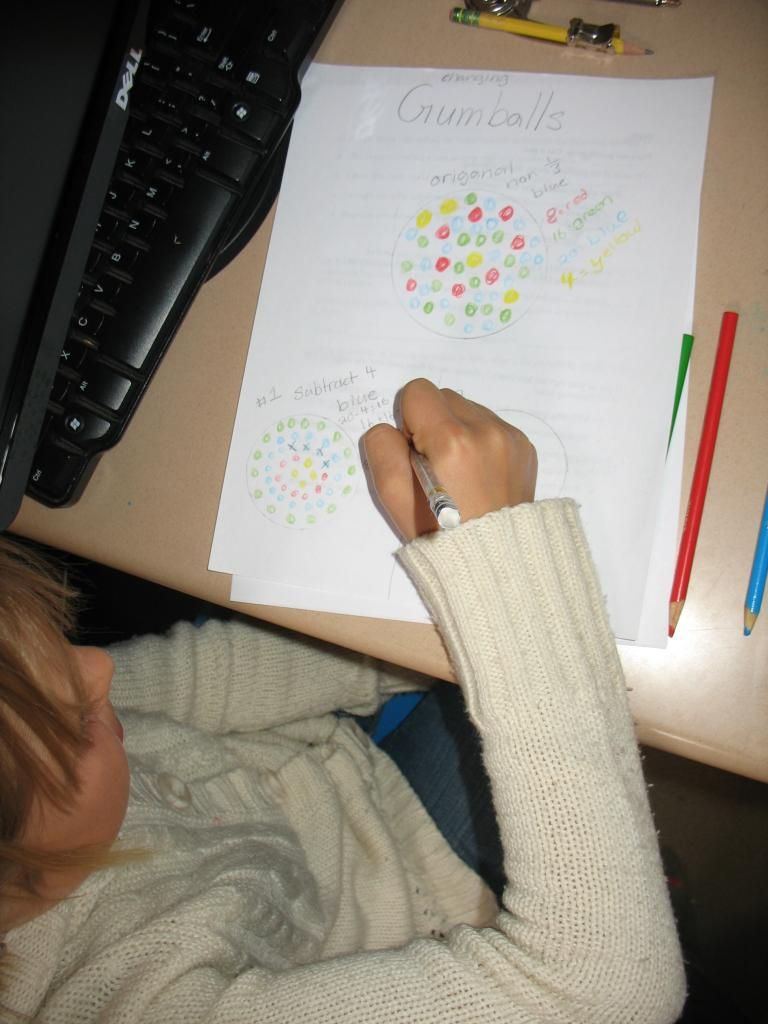
BLUE MATH
Making a poster about gumballs!? Yup. That is what students had to do on the math test that took both math classes on Monday and Tuesday to accomplish. Higher order thinking was put to the test with these gumballs but I think students still made the grade.
On Wednesday, we began the new unit with a review of positive and negative integers.
IXL Correlations for this week and next week:
This week in Red Math
Investigations: Picturing Polygons; Investigations 2-3
This week students began to be more comfortable with coordinate grids that have positive and negative numbers. We will continue to work with coordinate grids next week as we use them to help us with our explorations of geometric shapes. This week students also learned how to use a protractor to read angles. They defined shapes that have up to twelve sides and associated other familiar words with the prefixes of those shapes. It will be fun to blend all of these separate skills together next week!
 correlations for this week and next week:
correlations for this week and next week:
Geometry |
|
|
Next week I am unsure of which Investigations units we will cover as we are veering away from the exact curriculum at the moment to cover more common core specific standards. Students should come close to mastering working with a coordinate grid and protractors next week, however.
This week in Blue Math
· This week we finished unit 1. The final test will be on Monday and we will continue to work with unit 2 next week.
 correlations for this week and next week:
correlations for this week and next week:
Multiplication Madness continues so don't forget to help your child study for the weekly quizzes. We now have a 'multiplication contract' that students have to complete before they take their quiz. This contract gives students a variety of ways to study their multiplication facts. It is an attempt to help make the study of their facts a more regular occurence at home and in the classroom. Ask your child to explain the multiplication contract to you and while you're at it, quiz them on their facts for the week!
This week in Red Math
Investigations: Picturing Polygons; Investigation 1, session 1 - defining a polygon - skip ahead to session 2 - coordinate grids - skip ahead to investigation 2 session 1&2 identifying triangles, quadrilaterals, and attributes of quadrilaterals
In this new unit, students will explore polygons. Students will learn how to use a coordinate grid with positive and negative numbers and then draw polyons on grids using coordinate points. Students will also investigate various properties of triangles, quadrilaterals, and regular polygons. They will measure the side lengths and angles of polygons using not only the Investigations curriculum but the Every Day Math curriculum which does a more thorough job of investigatin angles.
 correlations for this week and next week:
correlations for this week and next week:
Geometry |
|
|
Next week we will finish up identifying the characteristics of triangles and quadrilaterals and move on quickly to angle identification. We may even finish the unit next week to move onto the next unit of fractions which tends to take longer than any of the other Investigations units.
This week in Blue Math
· This week we powered through the rest of the first CPM unit. With a lot of review of equivalent fractions and adding / subtracting fractions, students had no problem breezing through the final chapters of the unit. There will be a test over this unit next week and we will finally be able to begin unit 2.
 correlations for this week and next week:
correlations for this week and next week:
This week in Red Math
Investigations: Mathematical Thinking at Grade 5 - Investigation 3; Sessions 2, 3, 4 and 5
This week in red math was spent reviewing concepts from the past unit in preperation for the end of the unit test. Students took the test on Wednesday and Thursday as well as an AIMS web math assessment.
 correlations for this week and next week:
correlations for this week and next week:
Multiplication |
|
Geometry |
Next week we will begin a new curriculum unit: Picturing Polygons. Hopefully we will make it through all of the first investigation which will introduce students to polygons and coordinate geometry.
This week in Blue Math
· If you want to have the best chances of getting a red gumball from a gumball machine, is it better if the machine is full of gumballs or half empty? How do the chances of getting an ace in a deck of playing cards change if you have three or four decks of cards to choose from instead of only one deck? This week the blue math group thought about the size of the sample space (the collection of all possible outcomes of an event). We worked with questions such as:
· How has the “whole” or total changed?
· How has the “portion” or part we are interested in changed?
· Has the event become more or less likely?
AAt the end of the week the blue group also took an AIMS web assessment - results will be shard with students and parents next week.
Next Week in Blue Math
CPM Core Connections 2: Begin 1.2.4 and venture into 1.2.5
 correlations for this week and next week:
correlations for this week and next week:
This week in Red Math
Investigations: Mathematical Thinking at Grade 5 - Investigation 3; Sessions 2, 3, 4 and 5
This week we worked with clusters of multiplication and division problems that focused students on using their knowledge of factor pairs for 100 and 1000 and their multiples to solve problems. Student work focused on developing mental multiplication and division strategies that rely on landmarks up to 10,000.
Red math students also began learning how to use the partial products algorithm to complete division problems.
 correlations for this week and next week:
correlations for this week and next week:
Division
|
Multiplication |
Number theoryK.6Greatest common factorK.7Least Common multiple |
Investigations: Mathematical Thinking at Grade 5 - Investigation 4 AND FINAL TEST on the unit
This week in Blue Math
CPM Core Connections 2: Finish 1.2.1 and begin 1.2.2
This week was about using probability to make predictions, expressing those predictions in terms of fractions, percents and decimals, and then plotting those predictions.
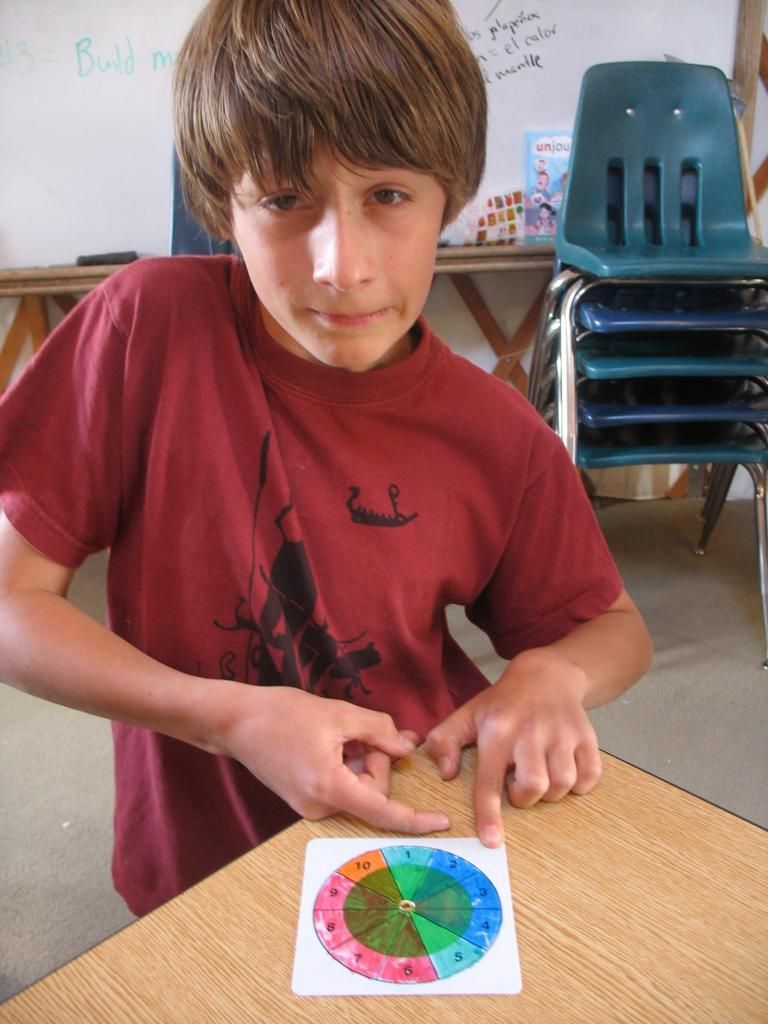
Next Week in Blue Math
CPM Core Connections 2: Finish 1.2.2 and possibly begin 1.2.3
 correlations for this week and next week:
correlations for this week and next week:
Decimal numbers |
Probability |
Multiplication Madness
Yes, some people may call it madness to try and help students learn their multiplication facts with ice cream sundaes but sometimes it can be effective. This week I introduced the multiplication madness challenge. When students prove their quick knowledge of all of the multiples of one number from 2 to either 12 or 18, they win a part of the sundae. (Remember, first hey have to earn their bowl and spoons but after that they earn scoops of ice cream and toppings).
Every Monday students will have to choose the number of whose multiples they will practice with throughout the week. Every Friday, they will be quizzed on those factors orally. They will be quizzed out of order and students must be timely in giving their answers.
Red Math
The theme of multiplication madness carried through from the challenge, to the math journal exercises, to our group curriculum work. In the math journals, students demonstrate their comfort level with multiplication algorithms. If students are not comfortable with lattice multiplication they are asked to work with it to solve the math journal and if they are not comfortable with the traditional algorithm, they are asked to practice with it. Students were also briefly introduced to multiplying decimals during math journal time at the end of the week.
Multiplication madness continued in our group work as we continued to work with factors and multiples and started work with multiplication clusters.
Multiplication Cluster are not only really fun but important. They are sets of problems that help students think about using what they know to solve harder problems. For example, what do you know that would help you solve 12x25? If you know that 4x25=100, you might think of 12x25 as (4x25)+(4x25)+(4x25) or 100+100+100. Or, you might start with 10x25. If you know that 10x25 = 250, then you can start with 250 and add two more 25's to get 300.
As students work with clusters, they learn to think about all of the number relationship they know that might help them solve the problem they are working on.
Blue Math
This week the blue group completed reviewing the following concepts: number patterns, converting from decimals - percents - fractions; visually representing decimals, percents, and fractions with shapes; Area and perimeter of rectangles and triangles; the pythagorean theorem; mean, median, mode.
All of this review paid off on Friday as they began to put this knowledge to new uses within the probability unit. Probability in 6th and 7th grade gets tricky because it asks students to analyze/interpret data and suggest outcomes. The data, however, can be complicated if students struggle with skills mentioned above.
Students had quite a bit of fun working with the probability of events and games on Friday.
Red Math Group
This week students practiced finding factors of numbers from 100 - 1000. They grew more confident with the differences between the terms factor, multiple, square, and prime. We also began practicing our multiplication math facts and next week, will start the multiplication challenge where students will show their proficiency of the multiplication facts for one number per week to win a prize that has yet to be determined.
If students work with IXL this weekend, they should continue to complete the 'multiplication' section of the site.
Blue Math Group
This week the blue group ended up reviewing many concepts that they needed to have a more solid foundation in before they could be utilized in the probablity unit we are currently studying. Those skills included: rounding numbers up and down and understanding place value, and finding the mean and median of a set of numbers. Students also had fun working with number sentence puzzles which were actually algebraic sentences disguised as games.
If students from the blue group work on IXL this weekend, they should be working on:
|
5th grade Review Place values and number sense |
6th Grade Practice Statistics
|
Students were separated into math groups this week. Each group alternated between having direct instruction with the teacher, independent work time, and time on the computer using IXL to review math concepts from last year. The IXL program seems to be wildly popular so if you child asks to practice math at home using it, please let them and take advantage of this craze while it lasts.
Red Math (aka 5th grade math) 
Working with number puzzles and rectangle arrays, students in the red math group learned how to describe numbers and number relationships with the terms factor, multiple, prime, and square. We are learning to recognize numbers in terms of whether they were a multiple, factor, even, odd, prime, and square.
Number puzzles are fun ways to learn how to:
Blue Math (aka 6th grade math)
We started off our week focusing on probability. Probability is the chance that something will happen. It is something students may have thought about in various aspects of daily life, but in this chapter they will learn how to calculate it mathematically. As students work with fish tanks, experiment with spinners, and toss coins, they will determine how to find the theoretical and the experimental probability that an event will occur. Students will also review or reinforce their understanding of peremiter, area, and working with fractions and other portions.
In this chapter, students will: